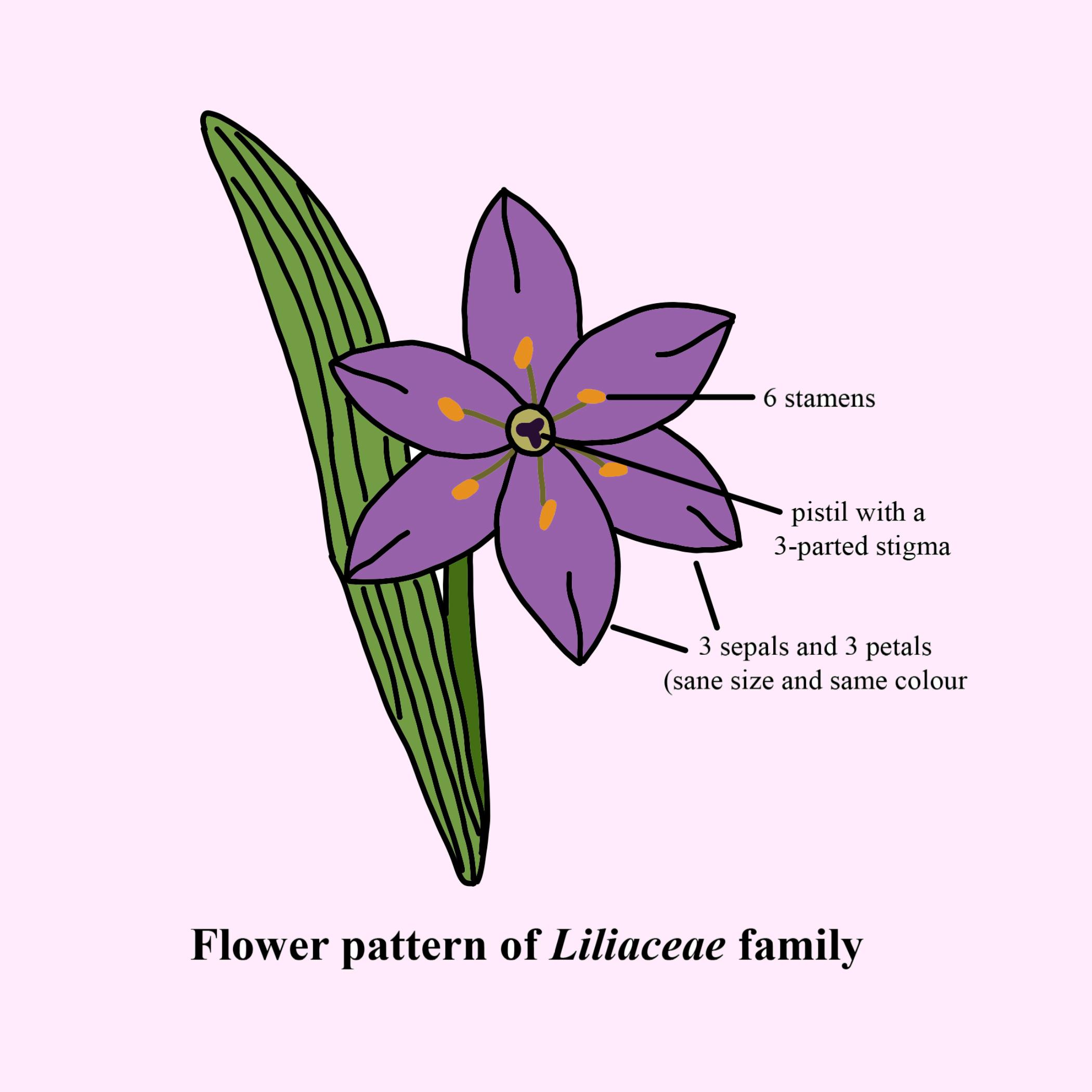
Perianth is found in which family
(a) Cruciferae
(b) Solanaceae
(c) Liliaceae
(d) Malvaceae
Answer
557.4k+ views
Hint: It comprises around 254 (or 15) genera and around 4075 (or 610) known types of flowering plants. They are monocotyledonous, perennial, herbaceous, often bulbous geophytes. Plants in this family have advanced with a considerable measure of morphological variety notwithstanding the hereditary similitude.
Complete answer:
- It belongs to the Liliaceae family.

- Liliaceae is a perianth as there is no distinction between the sepals and petals, the non-essential organs of a flower.
Additional information: Regular qualities remember enormous blossoms with parts orchestrated threes: with six shaded or designed petaloid tepals (undifferentiated petals and sepals) organized in two whorls, six stamens, and a prevalent ovary. The leaves are linear in shape, with their veins usually arranged parallel to the sides, single and arranged alternating on the stem, or during a rosette at the bottom. Most species are developed from bulbs, albeit some have rhizomes. First described in 1789, the Liliaceae became a paraphyletic "catch-all" (wastebasket) group of petaloid monocots that didn't fit into other families and included an excellent number of genera now included in different families and at times in different requests. Therefore, numerous sources and portrayals named "Liliaceae" manage the more extensive sense of the family.
The family developed roughly 68 million years back during the Late Cretaceous to Early Paleogene periods. Liliaceae are generally dispersed, principally in calm locales of the Northern Hemisphere and the blossoms are bug pollinated. Numerous Liliaceae are significant elaborate plants, broadly developed for their appealing blossoms, and associated with significant horticulture of cut blossoms and dry bulbs. A few animal categories are noxious whenever eaten and can have unfavorable wellbeing impacts on people and family unit pets.
So the correct answer is ‘(c) Liliaceae’.
Note: Various Liliaceae genera are famously developed plants in private and public spaces. Lilies and tulips especially have had considerable symbolic and ornamental value, and appear frequently in paintings and therefore the decorative arts. They are also an economically important product. Most of their genera, Lilium especially, face considerable herbivory pressure from deer in some areas, both wild and domestic
Complete answer:
- It belongs to the Liliaceae family.

- Liliaceae is a perianth as there is no distinction between the sepals and petals, the non-essential organs of a flower.
Additional information: Regular qualities remember enormous blossoms with parts orchestrated threes: with six shaded or designed petaloid tepals (undifferentiated petals and sepals) organized in two whorls, six stamens, and a prevalent ovary. The leaves are linear in shape, with their veins usually arranged parallel to the sides, single and arranged alternating on the stem, or during a rosette at the bottom. Most species are developed from bulbs, albeit some have rhizomes. First described in 1789, the Liliaceae became a paraphyletic "catch-all" (wastebasket) group of petaloid monocots that didn't fit into other families and included an excellent number of genera now included in different families and at times in different requests. Therefore, numerous sources and portrayals named "Liliaceae" manage the more extensive sense of the family.
The family developed roughly 68 million years back during the Late Cretaceous to Early Paleogene periods. Liliaceae are generally dispersed, principally in calm locales of the Northern Hemisphere and the blossoms are bug pollinated. Numerous Liliaceae are significant elaborate plants, broadly developed for their appealing blossoms, and associated with significant horticulture of cut blossoms and dry bulbs. A few animal categories are noxious whenever eaten and can have unfavorable wellbeing impacts on people and family unit pets.
So the correct answer is ‘(c) Liliaceae’.
Note: Various Liliaceae genera are famously developed plants in private and public spaces. Lilies and tulips especially have had considerable symbolic and ornamental value, and appear frequently in paintings and therefore the decorative arts. They are also an economically important product. Most of their genera, Lilium especially, face considerable herbivory pressure from deer in some areas, both wild and domestic
Recently Updated Pages
The number of solutions in x in 02pi for which sqrt class 12 maths CBSE

Write any two methods of preparation of phenol Give class 12 chemistry CBSE

Differentiate between action potential and resting class 12 biology CBSE

Two plane mirrors arranged at right angles to each class 12 physics CBSE

Which of the following molecules is are chiral A I class 12 chemistry CBSE

Name different types of neurons and give one function class 12 biology CBSE

Trending doubts
One Metric ton is equal to kg A 10000 B 1000 C 100 class 11 physics CBSE

What is 1s 2s 2p 3s 3p class 11 chemistry CBSE

Discuss the various forms of bacteria class 11 biology CBSE

State the laws of reflection of light

Explain zero factorial class 11 maths CBSE

An example of chemosynthetic bacteria is A E coli B class 11 biology CBSE




